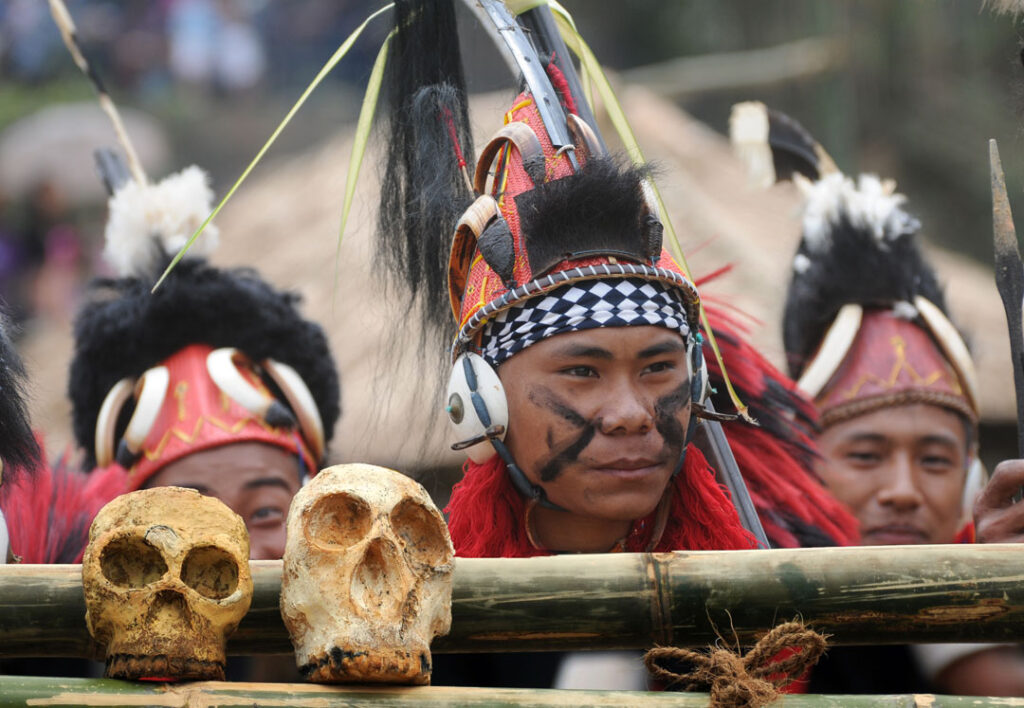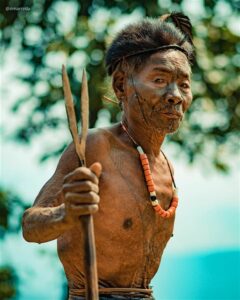Headhunting tribes: For UPSC Anthropology
Topic:
Paper 1: Religion and Magic, MagicoReligious Functionaries, Feuding among tribes (Political anthropology), law and justice in primitive society
Paper 2: Socio-economic characteristics of Indian tribes, Social change among Indian tribes, Impact of Christianity on tribes
- Headhunting is the practice of taking and preserving a person’s head after killing the person.
- Headhunting was practised in historic times in parts of Oceania, South Asia and Southeast Asia, West and Central Africa, Mesoamerica, and Europe. In India, Headhunting has been a practice among the Mizo and the Naga tribes till the 19th century.
- The headhunting practice has been the subject of intense study within the anthropological community, where scholars try to assess and interpret its social roles, functions, and motivations.
Anthropological writings explore themes in headhunting that include:
- Mortification of the rival
- Ritual violence
- Cosmological balance
- The display of manhood
- Cannibalism
- Dominance over the body and soul of his enemies in life and afterlife
- As a trophy and proof of killing (achievement in hunting)
- Show of greatness, prestige by taking on a rival’s spirit and power
- As a means of securing the services of the victim as a slave in the afterlife.
- Today’s scholars generally agree that headhunting’s primary function was ritual and ceremonial. It was part of the process of structuring, reinforcing, and defending hierarchical relationships between communities and individuals.
- Some experts theorize that the practice stemmed from the belief that the head contained “soul matter” or life force, which could be harnessed through its capture

Case study:
- In Southeast Asia, anthropological writings have explored headhunting and other practises of the Murut, Ilongot, Igorot, Iban, Dayak, Berawan, Wana, and Mappurondo tribes.
- Among these groups, headhunting was usually a ritual activity rather than an act of war or feuding. A warrior would take a single head. Headhunting acted as a catalyst for the cessation of personal and collective mourning for the community’s dead. Ideas of manhood and marriage were encompassed in the practice, and the taken heads were highly prized.
- Other reasons for headhunting included capture of enemies as slaves, looting of valuable properties, intra and inter-ethnic conflicts, and territorial expansion.
- Italian anthropologist and explorer Elio Modigliani visited the headhunting communities in South Nias (an island to the west of Sumatra) in 1886; he wrote a detailed study of their society and beliefs. He found that the main purpose of headhunting was the belief that, if a man owned another person’s skull, his victim would serve as a slave of the owner for eternity in the afterlife.
In India:
- The Konyak warrior tribe is one of the many Naga tribes known for their fierce headhunting history, which was part of their strong warrior tradition.

- They beheaded their enemies and brought back the severed heads as trophies in a specially designed basket that they carried to the battles. The heads were then proudly displayed on the walls and doorways of the warriors.
- Those who returned home with the heads would be revered as warriors. It was believed that human heads exuded a mystical force that would bring prosperity and benefit local crops.
- The Indian government put a ban on headhunting in 1960
- Other facts about them:
- The next generation of the Konyaks partially embraced a Baptist-based Christianity.
- They have Elaborate facial tattoos. Headhunting and the ritual of tattooing were inextricably linked. After every raid, a warrior was decorated with diamond or lozenge markings on his body—in the colour of aubergine. The different tattoos worn by a person conveyed his/her status, position, stage of life and achievements in Konyak society. There were idiosyncratic designs for those belonging to the aristocratic class, warriors, wedded and unwedded women.
- For the men, the tattoos defined their rites of passage from boyhood to manhood, and their achievements in battle. For the woman, it defined her cycle of life of having passed from one stage of life to the other.
- They have large ear piercings made of animal horns and war hats made of hunted wild pigs’ horns, hornbill feathers, and wild bear or goat hair.

Social Change:
- Coming in contact with the outside world and their subsequent exposure brought about changes in Konyak society
- By the late 1800s, missionaries had already begun establishing schools and spreading Christianity across the land. It had a big influence on the old tradition—it was regarded as heathen
- Today, almost 98% of the Konyak community has converted to Christianity.
- The British banned headhunting in 1935—a move that proved fatal to the customary inking ritual.
Q. Head Hunting among India Tribes (10marks)
Q. Impact of Christianity among Indian tribes (15marks)
For more case study and articles related to anthropology: Click here
For UPSC anthropology preparations: click here
For UPSC anthropology videos: Click here











